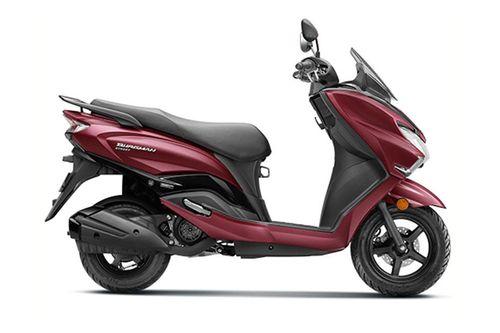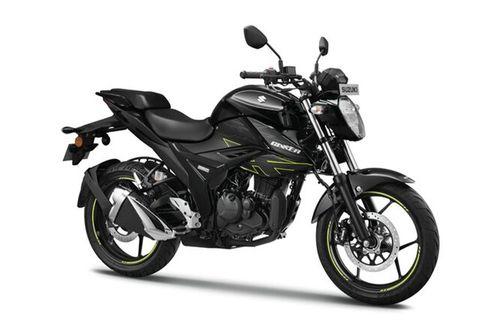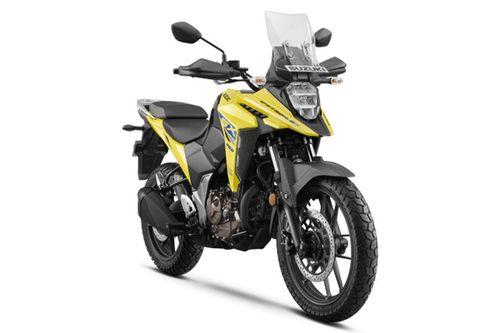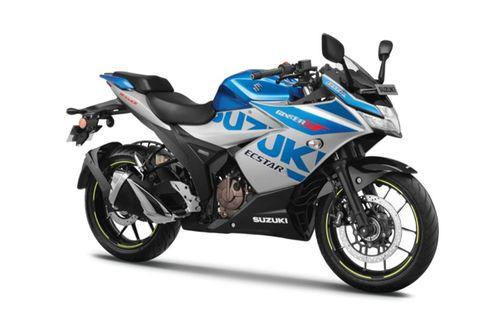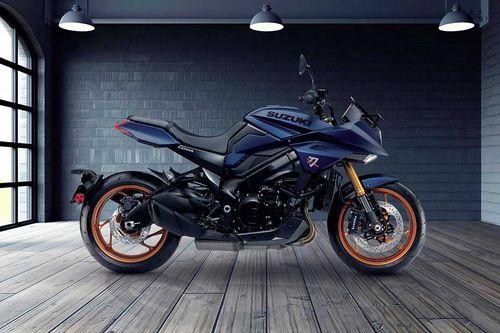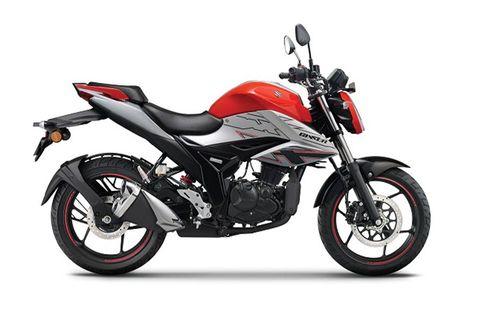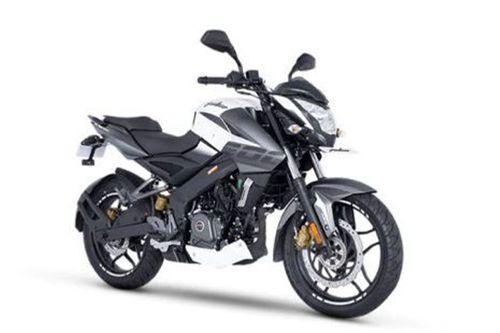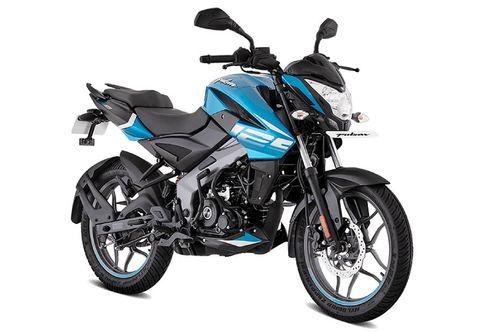About Suzuki Bikes
Suzuki Motor Corporation began as a small loom manufacturing company in Hamamatsu, Japan, in 1909, founded by Michio Suzuki. For over three decades, Suzuki Loom Works specialized in creating weaving machines for Japan’s thriving silk industry. The company gained a reputation for innovation and precision in loom manufacturing.
In the 1930s, Michio Suzuki decided to diversify into the automotive sector to meet growing transportation demands. However, World War II halted these plans, and Suzuki returned to loom manufacturing during the war.
After the war, Suzuki shifted focus to motorized vehicles, recognizing the potential for affordable, efficient transportation in a recovering Japan. The company’s first product in this category was a motorized bicycle.
Entry into Motorcycles: The Power Free (1952)
In 1952, Suzuki introduced its first motorized bicycle, the Power Free, which featured a 36cc two-stroke engine. It was innovative for its time, offering a dual-mode system that allowed riders to either pedal manually or use the engine. The simplicity and affordability of the Power Free made it a popular choice for post-war Japan.
The success of the Power Free led to government support, encouraging Suzuki to further explore motorcycle manufacturing.
The First True Motorcycle: Diamond Free (1953)
Suzuki followed up with the Diamond Free in 1953, a more advanced motorized bicycle featuring a 60cc engine. The Diamond Free was well-received for its reliability and performance, marking Suzuki's entry into the motorcycle industry.
By 1954, the company had officially changed its name to Suzuki Motor Co., Ltd., signaling its transition into a dedicated automobile and motorcycle manufacturer.
Expansion into Scooters and Small Motorcycles (1950s–1960s)
In 1955, Suzuki launched its first true motorcycle, the Colleda, powered by a 125cc four-stroke engine. The Colleda showcased Suzuki's engineering prowess and set a benchmark for performance and durability.
During this period, Suzuki also began experimenting with scooters. In 1955, they introduced the Suzulight, a small scooter that reflected their emphasis on compact, efficient vehicles.
In the 1960s, Suzuki gained international recognition with lightweight motorcycles such as the Suzuki T20 (Super Six), a 250cc bike known for its innovative six-speed transmission. This model helped Suzuki establish itself as a global player in the motorcycle industry.
International Racing Success and Technological Advancements (1960s–1970s)
Suzuki entered the international racing scene in the early 1960s, participating in the Isle of Man TT, one of the most prestigious motorcycle races. In 1962, Ernst Degner won Suzuki’s first Isle of Man TT in the 50cc class, showcasing the company's engineering capabilities.
The success on the racetrack fueled Suzuki's innovation. In 1968, Suzuki introduced the T500 Titan, a 500cc two-stroke motorcycle that became popular for its power and reliability.
Suzuki also made strides in the scooter segment, focusing on urban mobility solutions. Models like the Suzuki Fronte showcased the brand’s commitment to lightweight and economical two-wheelers.
Expansion to Global Markets (1970s–1980s)
In the 1970s, Suzuki expanded aggressively into international markets, establishing manufacturing plants and partnerships in countries like the United States, India, and Indonesia. The company introduced iconic motorcycles such as:
Suzuki GT750 (1971): Nicknamed the "Water Buffalo," this was Suzuki’s first liquid-cooled motorcycle, aimed at the sports touring segment.
Suzuki RE5 (1974): A unique rotary-engine motorcycle that demonstrated Suzuki’s willingness to experiment with unconventional technology.
Suzuki GS Series (1976): A line of four-stroke motorcycles that catered to performance enthusiasts.
Suzuki also gained a reputation for its performance bikes, with models like the GSX-R series becoming benchmarks in the sportbike category.
Entry into India: The Suzuki-Ind-Suzuki Partnership (1982)
In 1982, Suzuki entered the Indian market through a joint venture with TVS Motor Company, forming TVS Suzuki Ltd. This partnership introduced the Suzuki Samurai, Suzuki Max 100, and Suzuki Shogun, lightweight motorcycles that became household names in India during the 1990s.
The collaboration ended in 2001, and Suzuki established its independent subsidiary, Suzuki Motorcycle India Private Limited (SMIPL), in 2006.
Global Innovations and the Rise of Scooters (1990s–2000s)
In the late 1990s and early 2000s, Suzuki diversified its lineup to cater to the growing demand for scooters and commuter motorcycles. Key models included:
Suzuki Access 125 (2007): A practical and reliable scooter that became one of the best-selling models in India.
Suzuki Hayabusa (1999): A groundbreaking supersport bike that set a top-speed benchmark of 300 km/h, earning legendary status among enthusiasts.
Suzuki also continued its dominance in the sportbike segment with the GSX-R1000, which combined advanced electronics and high performance.
Electric and Urban Mobility Focus (2010s–2020s)
Suzuki embraced the shift toward sustainability and urban mobility in the 2010s by developing hybrid and electric scooters. While maintaining a strong presence in the traditional motorcycle market, Suzuki began working on next-generation two-wheelers to cater to environmentally conscious consumers.
Key developments during this period included:
Suzuki Burgman Street (2018): A maxi-scooter launched in India that combined premium features with a stylish design.
Electric Prototypes: Suzuki unveiled several electric scooter concepts, signaling its commitment to a greener future.
Racing Legacy and Modern Success
Suzuki remained a force in motorcycle racing, winning multiple championships in MotoGP. In 2020, Suzuki secured the MotoGP World Championship with rider Joan Mir, marking a significant milestone in the company’s racing history.
Current Position and Vision (2020s)
As of 2024, Suzuki continues to be a leading global manufacturer of motorcycles and scooters. Its strategy includes:
- Introducing affordable electric scooters for urban markets.
- Incorporating advanced features like smartphone connectivity and hybrid engines.
- Strengthening its presence in emerging markets like India, Southeast Asia, and Africa.
Key Milestones in Suzuki's Journey
1909: Founded as Suzuki Loom Works by Michio Suzuki.
1952: Launch of the Power Free motorized bicycle.
1954: Renamed Suzuki Motor Co., Ltd.
1962: First Isle of Man TT victory.
1982: Entered the Indian market through a joint venture with TVS.
2006: Suzuki Motorcycle India Private Limited established.
2007: Launch of the Suzuki Access 125 in India.
1999: Introduction of the Suzuki Hayabusa, a record-breaking supersport bike.
2020: MotoGP World Championship win.
Suzuki Motorcycles and Scooters have carved a unique legacy through innovation, racing excellence, and a customer-centric approach. From humble beginnings in loom manufacturing to becoming a global leader in two-wheelers, Suzuki remains a symbol of reliability, performance, and adaptability in the ever-evolving automotive landscape.
Suzuki started in the motorcycle industry in 1952, though it was founded in 1909 by Michio Suzuki as a loom manufacturer. After WWII, Suzuki entered the motorized vehicle market with the Power Free motorized bicycle. In 1954, they launched their first complete motorcycle, the Colleda COX. The 1960s saw racing success, including a 1962 World Championship win. Iconic models like the GT750 and RE5 emerged in the 1970s. The GSX-R750 in 1985 set new sportbike standards, and the Hayabusa became legendary in the 1990s and 2000s. Today, Suzuki is known for performance, reliability, and innovation, continually evolving to meet riders' needs.
Suzuki Bikes in India
Suzuki Motorcycles entered the Indian market in 2006 as Suzuki Motorcycle India Private Limited (SMIPL), a wholly-owned subsidiary of Suzuki Motor Corporation, Japan. With its long-standing legacy of innovation and performance, Suzuki quickly established itself in India by offering a range of bikes and scooters catering to diverse consumer needs.
The company’s offerings include popular motorcycles like the Gixxer series, known for sporty designs and robust performance, and scooters like the Access 125, which excel in practicality and efficiency. Suzuki has steadily expanded its market presence with a strong dealer network and reliable after-sales service. It focuses on blending Japanese technology with Indian consumer preferences, ensuring its products are both stylish and reliable. Today, Suzuki is a recognized name in the Indian two-wheeler segment for its performance-oriented and commuter-friendly products.
Brand USP: The Suzuki Advantage
Suzuki’s unique selling proposition lies in its global legacy, advanced engineering, and customer-centric approach. Here's what makes Suzuki stand out:
Japanese Engineering Excellence
Suzuki motorcycles and scooters are designed to deliver unmatched performance, fuel efficiency, and durability, owing to their superior Japanese engineering.
Wide Product Portfolio
Suzuki caters to diverse segments, offering products like the sporty Gixxer series, the reliable Access 125 scooter, and the robust V-Strom 650XT adventure bike.
Performance and Style
Suzuki bikes are known for their balanced performance and modern aesthetics, appealing to both young riders and experienced enthusiasts.
Global Motorsports Legacy
Suzuki’s strong presence in motorsports, including MotoGP, influences its product lineup, ensuring cutting-edge technology and superior handling.
Customer Focus
With affordable pricing, attractive financing options, and low maintenance costs, Suzuki prioritizes the needs of its Indian customers.
Suzuki Bikes Latest Updates
- Suzuki launched the GSX-8R in India, priced at ₹9.25 lakh (ex-showroom). This model has been well-received for its performance and advanced features.
- Suzuki Motorcycle India achieved a record sales milestone, selling 1,20,055 units in October, marking a 19% year-on-year growth. Domestic sales alone accounted for 1,04,940 units.
- The e-Burgman, an electric scooter, is set to launch in March 2025.
Suzuki Bikes Series
The Suzuki Gixxer Series is a popular line of motorcycles known for their sporty design, performance, and affordability.
- Gixxer
- Gixxer SF
- Gixxer 250
- Gixxer SF 250
Suzuki Bikes Price Range
- Suzuki Access 125: ₹80,700 - ₹91,300
- Suzuki Avenis: ₹92,000 - ₹92,800
- Suzuki Gixxer 150: ₹1.35 - ₹1.38 lakh
- Suzuki Gixxer SF 150: ₹1.46 lakh
- Suzuki V-Strom SX: ₹2.12 lakh
- Suzuki Katana: ₹13.61 lakh
- Suzuki Hayabusa: ₹16.90 - ₹17.70 lakh
Suzuki Dealers in India
Suzuki boasts an extensive dealer network with 500+ authorized showrooms across India. These dealerships provide a seamless and professional buying experience.
Locate the nearest authorized Suzuki dealership using the our dealer locator tool: Suzuki Dealer Locator
Suzuki Service Centers in India
Suzuki ensures customer satisfaction through its network of 300+ authorized service centers, equipped with trained professionals and advanced tools to maintain your bike’s performance.
Use our service center locator to find the nearest service facility: Suzuki Service Centre
Suzuki Toll-Free Number
For inquiries, complaints, or service-related requests, you can reach out to Suzuki’s Customer Care via their toll-free number: 18001217996
How to get Suzuki Bike loan in India
To get a Suzuki bike loan in India, start by choosing a lender, such as a bank or a non-banking financial company (NBFC). Compare their interest rates, loan tenures, and eligibility criteria. Once you've selected a lender, fill out the loan application form and submit the required documents, including identity proof, address proof, income proof, and bank statements. The lender will assess your application and, if approved, disburse the loan amount. You can then use this amount to purchase your Suzuki bike and repay the loan in equated monthly installments (EMIs) over the agreed tenure.
Why Choose CarBike360?
CarBike360 is an excellent platform for buying or selling vehicles, offering a host of benefits. It provides extensive listings of new and used cars and bikes, making it easy to find options that suit your preferences and budget. With detailed reviews, expert insights, and comparisons, the platform simplifies decision-making. Its intuitive interface ensures a hassle-free browsing experience, while regular updates keep users informed about the latest in the automotive world. Financial tools like EMI calculators and loan options add convenience, helping users manage their budgets efficiently. These features make CarBike360 a trusted and comprehensive solution for automotive needs.

